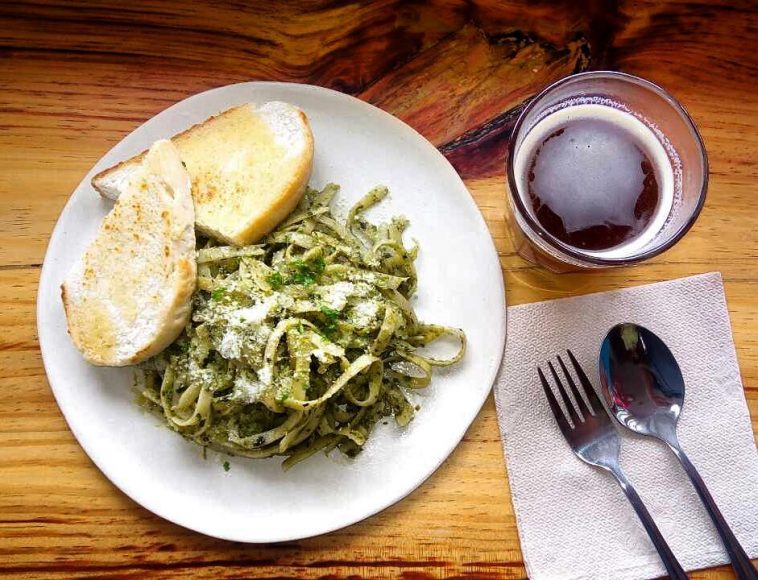To say that coffee is a staple for Pinoys is an understatement. With numerous coffeeshops located every inch of the metro, love for caffeine sure is evident. Located in the middle of Maaalahanin Street in Quezon City is an inconspicuous coffeeshop. Hardly noticeable when you’re driving by the area, it almost seems like SGD Coffee Bodega would like to remain low-key rather than be a well-known establishment. Unexpectedly however, this homey café is a crowd-drawer, and it isn’t quite a surprise why.
SGD Coffee has been in the business of serving its customers with the best-tasting coffee for quite some time. They have, in fact, been winning prestigious international awards for their beans and coffee blends. We interviewed SGD Coffee owner Rich Watanabe and asked him all things caffeine.
On the beginnings of SGD Coffee and why Sagada is “the one”
“The short answer is Sagada is the first place where someone said yes. I went all around the country. The plan was to achieve the best coffee in the Philippines. It was Goad Sibayan, micropreneur farmer who owns Bana’s Coffee, who said yes first. Goad said that we had to find land that has not been tilled before or not cultivated for a long time so it doesn’t affect the trees. I thought it was a crazy idea but I wanted people to know Philippine Coffee.
What struck me most about Sagada was the very, very clean environment. You feel the air enter your lungs up to the ends of your bronchial tubes. What made Sagada special for coffee is the high elevation. Sagada gets the first exposure to the underground springs, the first drops of rain. The high elevation also restricts the heavy metals in the air. Those don’t get up that high. It was important that the environment was optimized for our desired outcome.
In this regard, we don’t need to get technical. Cultural perspective nga e. People can make connections through how they prepare their coffee, like “I remember my lolo” or “In my childhood…” That’s something that I want to preserve: the connections people make through coffee. We learn more about someone or something when we share a memory with it, when we have a connection with it. Coffee is roasted in so many ways, brewed in so many ways, expressed in so many ways.”
On promoting Philippine Coffee through the Coffee Heritage Project
The endeavor to support local especially during these times has a huge social impact on the farmers and on small businesses such as SGD Coffee no matter how small our contribution may be. Advocacies like the Coffee Heritage Project promote social good and sustainability. “Coffee Heritage Project (CHP) is an advocacy to improve, promote, conserve Philippine Coffee—for coffee production and consumption to be responsible and sustainable. And by sustainable, we mean, CHP will not always need to be there. It’s not an entity in and of itself, it’s really just a project. Coffee Heritage Project might not be in Sagada for very long. We are beginning to build in Southern Philippines. The idea is not only to help in Sagada. It is to help Philippine coffee where we can.”
On the Coffee Science Center
Fun fact: The Coffee Science Center is SGD Coffee’s very own school where they teach you not just how to be a barista, but the science behind the beans as well. Mind you though, the courses change every so often. “The courses, they change because the climate is changing. What we used to teach like five years ago, will have to change because we are teaching adaptation to the changes in climate. It’s a very dynamic course and we’re changing so many things, details in it as we learn more about the coffee. I would say it’s a real-time workshop. What is on the ground is what we teach. At Coffee Science Center, trainees would get a no-bull-education on coffee. Meaning to say, I’m not going to tell you a romantic story. When we start, you hit the ground running, with real-time information.”
On what a first-time customer can expect from SGD Coffee
“If the customer has been to Baguio, it will remind them of Baguio. If the customer is from Sagada, it will remind them of home. If the customer has never been to either, then they will have witnessed what a Filipino coffeeshop would look like.
Intentionally, we don’t have anything red or green to remind you of your ex-coffee-love. I purposefully excluded those colors. Everything there is in its original color and texture and feel. And most of all, what hits you before you even step in is the aroma of the coffee permeating the place. It should feel Pinoy to you. It is familiar. It’s the things you take for granted like yero. So, for a first-timer, it’s to feel like a Filipino coffeeshop. It’s not trying to please any Westerner. Kasi nga, cultural, heritage, eh. For here, it’s for people to know you’re serious about your coffee.”
Must-try recos on the menu
“Inadobo sa Kape. We tried to marry two of the most quintessential Pinoy food, which is adobo—you talk to any child of Pinoy’s living anywhere in the world, they will say they’ve tasted adobo. When people see it on our menu, they are surprised but say “oo nga no, it works,” after they’ve tasted it. I think it’s a full experience in itself.”
The Essentials
- Business Name: SGD Coffee Bodega
- Address: 45 Maaalalahanin St., Teachers Village East, Diliman, Quezon City
- Contact/Phone Number: 0917-8269537
- Operating Hour/s: 8:00AM-6PM
- FB Page Link: https://www.facebook.com/SGD.Coffee/




